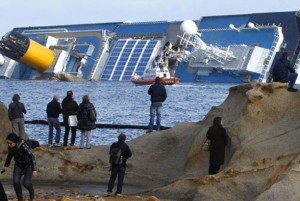Do New Cruise Line Safety Standards Make You Feel Safe?
 Continuing in the wake of the Costa Concordia disaster, Cruise Lines International Association (CLIA) and the European Cruise Council today announced that the cruise industry has adopted three new safety policies which are to be implemented with immediate effect. The announcement was made by Chairman of the European Cruise Council (ECC) and Member of the CLIA Executive Committee, Manfredi Lefebvre.
Continuing in the wake of the Costa Concordia disaster, Cruise Lines International Association (CLIA) and the European Cruise Council today announced that the cruise industry has adopted three new safety policies which are to be implemented with immediate effect. The announcement was made by Chairman of the European Cruise Council (ECC) and Member of the CLIA Executive Committee, Manfredi Lefebvre.
The three policies govern:
1) Passage Planning – Although cruise lines have followed IMO guidance on passage planning for many years, our policy now deems this to be a mandatory minimum requirement and enhanced by endorsement of the best practices contained in the International Chamber of Shipping’s Bridge Procedures Guide. Furthermore, under this policy each passage plan is to be thoroughly briefed to all bridge team members well in advance of its implementation and it is to be drafted by a designated officer and approved by the master.
2) Personnel Access To The Bridge – To minimize unnecessary disruptions and distractions on the bridge, we have adopted a policy that bridge access is to be limited to those with operational functions during any period of restricted maneuvering or when increased vigilance is required.
3) Lifejackets – In addition to the statutory requirement of carriage of lifejackets for each person onboard, we have adopted a policy of carrying additional adult lifejackets onboard each cruise ship in excess of these legal requirements so that the number of additional adult lifejackets to be provided must not be less than the total number of persons berthed within the ship’s most populated main vertical fire zone. This ensures that the number of lifejackets carried is far in excess of the number of persons actually onboard the ship.
This is on the heals of two other sets of safety policies roll out earlier this year.
In addition to more lifejackets, a previous new policy on emergency drill policy requiring a mandatory muster for embarking passengers prior to departure from port.
The new muster policy, which has been voluntarily initiated by the associations’ members and is effective immediately, exceeds existing legal requirements by calling for the mandatory muster of all embarking passengers prior to departure from port. On rare occasions when passengers arrive after the muster has been completed, passengers will be promptly provided with individual or group safety briefings that meet the requirements for musters applicable under the International Convention for the Safety of Life at Sea (SOLAS). The formal policy is designed to help ensure that any mandatory musters or briefings are conducted for the benefit of all newly embarked passengers at the earliest practical opportunity.
Musters are mandatory exercises conducted on cruise ships to ensure passengers are informed of safety protocols while onboard the ship, including emergency evacuation procedures. Current legal requirements for conducting a muster of passengers can be found in SOLAS and mandate that a muster occur within 24 hours of passenger embarkation.
What do you think? Will these new safety standards make you feel safer on a cruise?
If you enjoyed this article, please follow us at our website, our Facebook page, and on Twitter.
 The Roaming Boomers
The Roaming Boomers




Pingback: travel, vacations, scottsdale, trips, southwest, wine country, hiking, san diego, colorado, las vegasSouthwest Travel
Pingback: Would you Sail on the Recreated Titanic II? | The Roaming Boomers
Pingback: Would you Sail on the Recreated Titanic II?Southwest Travel